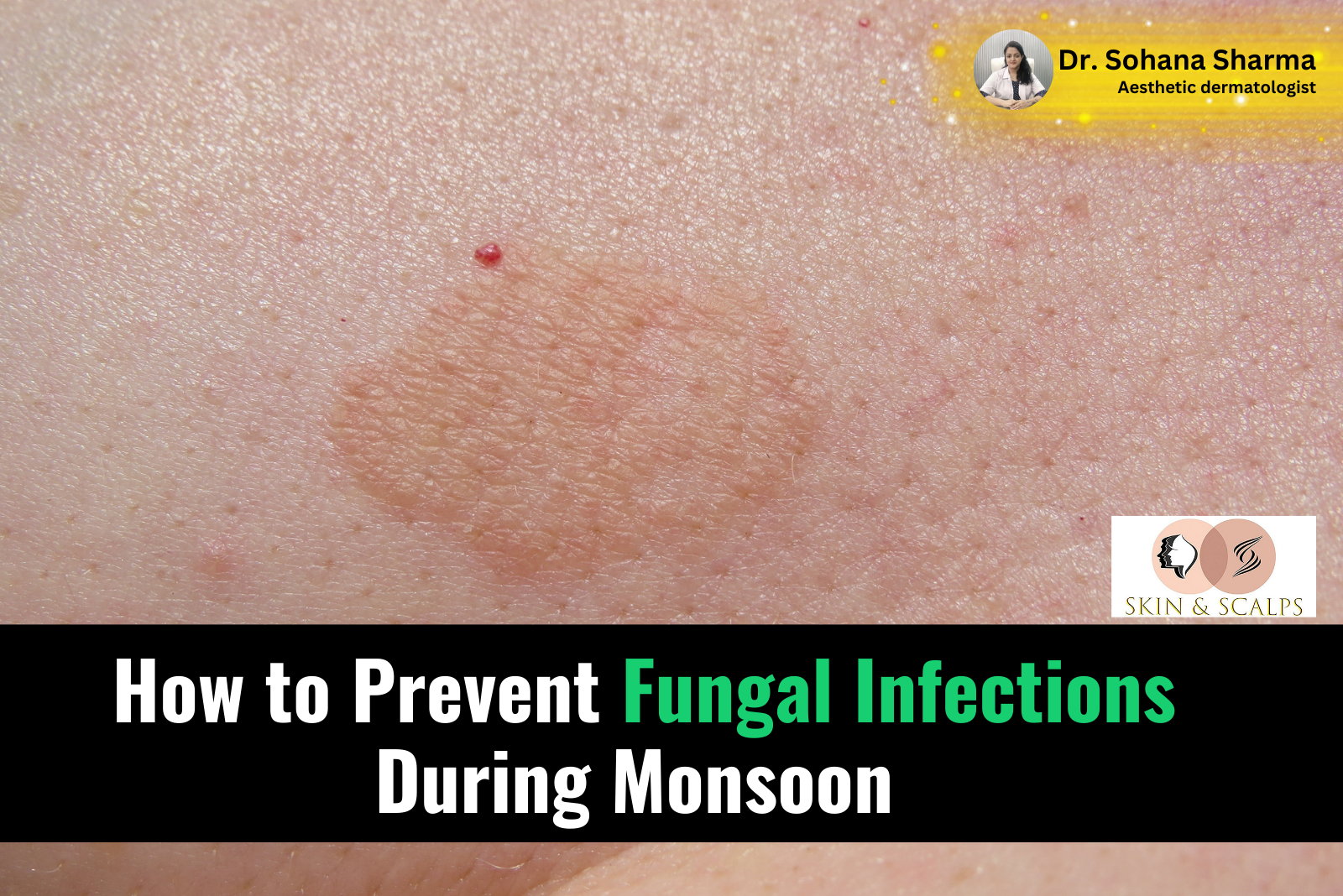The monsoon season is a welcome break from the hot summer heat. But it also makes you more likely to get fungal infections, which are hard to get rid of. Fungi love it when the air is humid,
clothes are wet, and people sweat. You can keep your skin healthy and free of infections, though, by following a few simple habits and expert-backed tips.
Let’s look at some practical, dermatologist-approved ways to stay safe this monsoon.
Why Fungal Infections Spike in Monsoon
The air holds more moisture than usual during the monsoon. This humidity sticks to your skin, especially in places like your groin, underarms, and between your toes. When it mixes with sweat, it becomes a place where fungi can grow. Wearing wet clothes or shoes makes the problem even worse.
Fungal infections like ringworm, athlete’s foot, and candidiasis can make your skin red, itchy, and painful. What’s the good news? It is very possible to stop it.
Keep Your Skin Dry and Clean
The first thing to do is control the moisture. Always dry yourself off completely after a bath, especially between your toes and in the folds of your body. As soon as you can, change out of wet clothes. Don’t sit in wet clothes for long periods of time.
Instead of rubbing your skin hard, pat it dry gently. This keeps the skin’s natural barrier intact while also reducing irritation. Talc or medicated powder that fights fungi can also help keep areas that sweat a lot dry.
Choose Breathable Clothing
You might be surprised to learn how important clothing choices are. Choose materials like soft linen and pure cotton that are breathable, light, and airy. Your skin will stay cool and breathe comfortably thanks to these natural materials’ ability to absorb perspiration and encourage airflow.
Sweat is trapped by tight clothing, which promotes the growth of fungi. To encourage airflow, dress in loose-fitting clothing instead. Additionally, don’t reuse wet or sweaty clothing. Before putting them on again, make sure to thoroughly wash and dry them.
Mind Your Footwear
During the monsoon, feet are frequently neglected, which can result in nail infections and athlete’s foot. Keep your feet dry at all times. When it’s raining, wear open shoes, such as sandals, to allow your feet to breathe.
Don’t spend too much time in wet shoes or socks. Before reusing your wet shoes, make sure they are completely dry. To absorb moisture, you can even put antifungal powder inside your shoes.
Shower Smartly
After getting wet from the rain, a quick shower helps remove fungi and dirt. Apply an antimicrobial or antifungal soap, particularly to areas that perspire a lot.
Even on days when you stay inside, make taking a shower a daily ritual. Frequent cleansing lowers your skin’s fungal count, which lowers your risk of infection.
Maintain Scalp Hygiene
Fungal infections can also affect your scalp. Fungal scalp infections or worsened dandruff can result from the humid monsoon weather. Regularly wash your hair, especially after being in the rain.
Make use of a gentle, pH-balanced shampoo that is appropriate for your hair type. Wet hair should not be tied up because this prolongs the moisture on the scalp. Before styling, let your hair air dry completely.
Boost Immunity With Healthy Habits
A robust immune system aids in the body’s natural defense against infections. Consume a
well-rounded, nutrient-dense diet full of fresh vegetables, fruits, and whole grains high in fiber. Drinking enough water actively aids in the removal of toxins from your body, so stay hydrated throughout the day. Immunity is also increased by regular exercise and getting enough sleep.
Although they may not appear to be directly related, lifestyle modifications are crucial for prevention.
Don’t Share Personal Items
It may seem innocuous to share shoes, socks, hairbrushes, or towels. However, fungi spread easily through these kinds of objects. Use your own personal care products at all times.
Shared linens should be washed separately in hot water and thoroughly dried if any family members have a fungal infection.
Watch Out for Early Signs
Even with every precaution, infections can still happen occasionally. Early warning signs include scaly patches, itching, redness, or white spots on the nails. The treatment process becomes simpler and more successful the earlier these problems are identified.
Refrain from scratching as this may exacerbate the infection or cause it to spread to other areas of the body.
Seek Professional Help Early
Mild itching can be relieved by home remedies, but don’t disregard infections that are persistent or spreading. If symptoms persist for more than a few days, see a dermatologist.
We at Skin & Scalps provide customized fungal infection treatments based on your skin type and way of life. In addition to speeding up healing, early treatment also stops recurrence.
Final Thoughts
During the monsoon season, fungal infections are frequent but avoidable. Make an effort to keep your skin dry, dress appropriately, and practice good hygiene. Keep an eye out for early warning signs and strengthen your immunity.
Discomfort is avoided with a little daily attention. And keep in mind that when prevention is insufficient, professional advice is crucial.
Our team at Skin & Scalps is always available to provide individualized guidance and care. Let your skin remain as fresh as the rain as you confidently enter the monsoon season.

